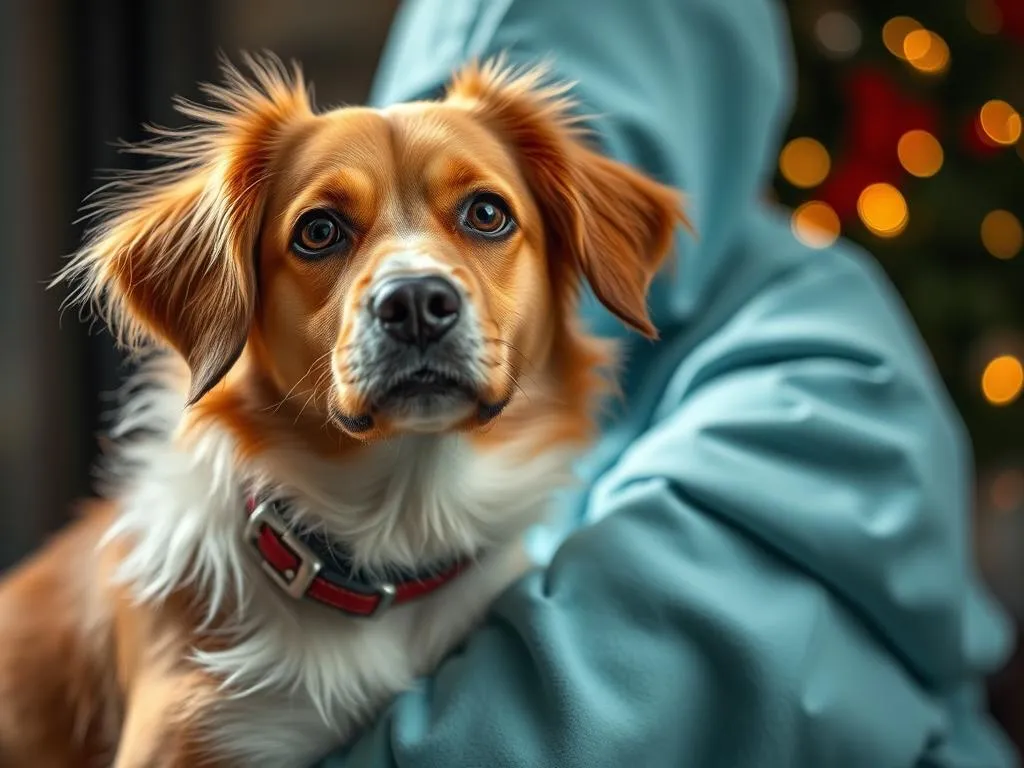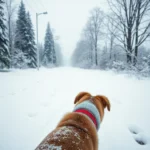
The well-being of our canine companions is a top priority for any responsible pet owner. However, the holidays can bring a unique set of challenges when it comes to dog health care. During festive times, the chances of encountering pet emergencies increase significantly due to changes in routine, exposure to unfamiliar foods, and heightened stress levels. Statistics reveal that pet emergencies spike by approximately 30% during holiday periods, underscoring the importance of being prepared.
Understanding how to handle pet emergencies on holidays not only helps in safeguarding your dog’s health but also provides peace of mind for you as a pet owner. In this guide, we will delve into the various aspects of pet emergencies during holidays, from preparation and prevention to emergency protocols and aftercare.
Understanding Pet Emergencies
Definition of Pet Emergencies
A pet emergency is any situation requiring immediate medical attention for your dog. Emergencies can arise from various incidents, including injuries, poisoning, or sudden illness. Common types of emergencies include:
- Injuries: Cuts, fractures, or wounds from accidents.
- Poisoning: Ingestion of toxic substances such as chocolate, certain plants, or household chemicals.
- Illness: Sudden onset of severe symptoms like vomiting or difficulty breathing.
Signs Your Dog Needs Emergency Care
Recognizing when your dog requires emergency care is critical. Look out for physical symptoms such as:
- Vomiting or diarrhea: Especially if persistent.
- Lethargy or weakness: Unusual tiredness or inability to stand.
- Difficulty breathing: Labored or rapid breathing can indicate distress.
Behavioral indicators may also reveal that your dog is unwell:
- Excessive barking or whining: Indicating pain or discomfort.
- Hiding or withdrawal: Seeking solitude can be a sign of distress.
- Aggression: Sudden changes in behavior may indicate pain or fear.
Preparing for Pet Emergencies During Holidays
Pre-Holiday Checklist for Dog Owners
Preparation is key to handling any potential emergencies. Before the holidays kick in, ensure your dog is in optimal health by:
- Scheduling health check-ups and updating vaccinations.
- Confirming that your dog’s identification is current, including microchip details and tags with your contact information.
Emergency Kit Essentials
Creating an emergency kit is a proactive step in ensuring your dog’s safety. Key items to include are:
- Bandages and gauze for minor injuries.
- Medication such as antihistamines or other prescribed drugs.
- Contact information for your veterinarian and nearest emergency animal hospital.
- A first aid manual specific to pets for quick reference during emergencies.
Researching Local Emergency Services
Know where to turn in case of an emergency. Research and compile a list of:
- 24/7 veterinary clinics and emergency animal hospitals in your area.
- After-hours services that you can contact when regular veterinary offices are closed.
Preventing Emergencies During the Holidays
Holiday-Specific Hazards for Dogs
The holidays can present unique risks for dogs. Be aware of:
- Toxic foods: Chocolate, grapes, raisins, and certain holiday plants (like poinsettias and mistletoe) can be harmful.
- Decorations: Tinsel, ornaments, and electrical cords may pose choking or electrocution hazards.
- Managing guests: Ensure that visitors understand how to interact with your pet gently, especially if your dog is anxious or stressed.
Safe Celebrations: Keeping Your Dog Calm
To maintain a calm environment for your dog during festivities:
- Consider designated quiet areas where your dog can retreat if feeling overwhelmed.
- Use calming aids such as pheromone diffusers or anxiety wraps to help soothe your pet during fireworks or loud celebrations.
Handling Emergencies When They Occur
Initial Steps in an Emergency Situation
In the event of an emergency, your first action should be to assess the situation. Ask yourself:
- What happened?
- Is my dog in immediate danger?
- How severe are the symptoms?
If you determine the situation is serious, it’s essential to call your vet or an emergency clinic for advice. Knowing when to seek professional help can make a significant difference in outcomes.
Emergency Protocols for Common Situations
Understanding specific emergency protocols can empower you to act effectively. Here are steps for some common emergencies:
- Choking: If your dog is choking, remain calm. Look for the object in their mouth; if visible, remove it carefully. If not, perform the Heimlich maneuver by applying pressure just below the rib cage.
- Cuts or wounds: Clean the area gently with warm water and apply a sterile bandage. Seek veterinary care if bleeding is severe or if the wound is deep.
- Allergic reactions: Symptoms may include swelling, hives, or difficulty breathing. If you suspect an allergic reaction, administer an antihistamine if instructed by your vet and seek immediate care.
Seeking Veterinary Care on Holidays
Finding Open Vet Clinics
During holidays, finding veterinary care can be challenging. Utilize resources such as:
- Apps or websites dedicated to locating emergency vets.
- Local directories or pet care forums can provide valuable information.
Before heading out, always call ahead to confirm that the clinic is open and inquire about their services.
What to Expect at an Emergency Vet Visit
When you arrive at an emergency vet clinic, be prepared for the following:
- Triage assessment: Your dog will likely be assessed immediately to determine the urgency of the situation.
- Treatment protocols: Expect a discussion regarding treatment options, which may include diagnostics, medications, or surgeries.
- Cost considerations: Emergency veterinary care can be expensive, so be aware of potential costs, and check if your pet insurance covers emergency visits.
Aftercare and Follow-Up
Recovery at Home
Once your dog has received the necessary care, it’s crucial to manage their recovery at home. Here are some tips:
- Follow your vet’s instructions regarding medication and care routines.
- Monitor your dog closely for signs of complications, such as increased pain, swelling, or changes in behavior.
Importance of Follow-Up Vet Visits
Follow-up visits are vital to ensure your dog is recovering properly. During these appointments, discuss:
- Any ongoing symptoms or concerns.
- Long-term care strategies to prevent future emergencies, such as dietary changes or behavioral training.
Conclusion
Being prepared for pet emergencies during the holidays is essential for every dog owner. Understanding the signs of emergencies, preparing an emergency kit, and knowing how to respond can make a significant difference in your dog’s health and safety. By taking proactive steps, you can enjoy the holiday season while ensuring your furry friend remains safe and healthy, strengthening the bond you share during both joyful and challenging times.
FAQs
What should I do if my dog eats something harmful during the holidays?
If you suspect your dog has ingested something toxic, immediately contact your veterinarian or an emergency clinic for guidance.
How can I prevent my dog from getting stressed during holiday events?
Establish a quiet space for your dog away from the noise and activity. Use calming techniques such as pheromone sprays or anxiety wraps.
Are there any specific holiday pet insurance policies I should consider?
While not specific to holidays, consider policies that cover emergencies and unexpected vet visits, particularly during high-risk periods.
What are the signs of heatstroke in dogs during summer holidays?
Look for excessive panting, weakness, drooling, and confusion. If you suspect heatstroke, cool your dog down immediately and seek veterinary care.
Can I trust online vet consultations during emergencies?
Online consultations can be helpful for non-critical situations but should not replace immediate veterinary care for serious emergencies. Always err on the side of caution.









